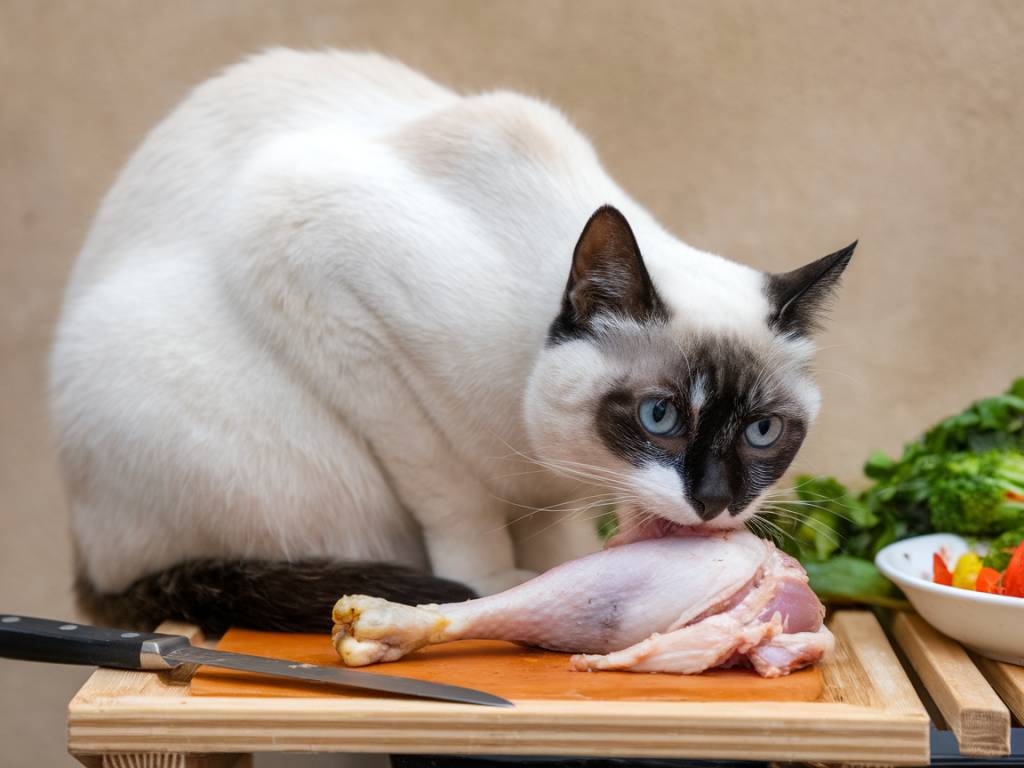Understanding Raw Feeding (BARF) for Cats
Raw feeding, often referred to as BARF (Biologically Appropriate Raw Food or Bones and Raw Food), has gained significant popularity among pet owners seeking a natural diet for their feline companions. Supporters of raw feeding argue that this diet closely mimics the natural prey diet of wild cats, aiming for improved health and vitality. However, as with any feeding option, it comes with both advantages and disadvantages. In this article, we delve into the pros and cons of raw feeding for cats to provide a comprehensive overview for pet owners considering this diet.
The Benefits of Raw Feeding
Proponents of raw feeding believe that a natural diet aligns more closely with a cat’s natural dietary needs, offering several potential benefits that processed cat foods might not provide.
- Improved Coat and Skin Health: Many pet owners report that their cats exhibit shinier coats and healthier skin after switching to a raw diet. This improvement is often attributed to the increased intake of essential fatty acids found in raw meats, which can enhance the condition of a cat’s fur and skin.
- Better Dental Health: Chewing raw bones can help reduce plaque buildup on a cat’s teeth. This natural abrasion mimics how wild cats would maintain dental health in their natural environment, potentially reducing the need for dental cleanings.
- Increased Energy Levels: Cats that eat a raw diet may show increased energy and activity levels. The high protein content in raw foods provides the energy needed for their active lifestyles, akin to their wild relatives.
- Healthy Weight Management: A diet high in protein and low in carbohydrates can help cats maintain a healthy weight. Raw feeding often involves fewer fillers and carbohydrates than commercial cat foods, which can aid in weight management.
- Improved Digestion: The absence of artificial additives and preservatives in raw diets can lead to better digestion. Some cats experience fewer gastrointestinal issues such as vomiting or diarrhea when on a raw regime.
Potential Risks of Raw Feeding
Despite its benefits, raw feeding also presents some challenges and risks that prospective feeders should carefully consider.
- Health Risks from Pathogens: Raw meats can harbor pathogens such as Salmonella and E. coli, posing a risk of contamination to both cats and their human families. Proper handling and sourcing of meat are crucial to minimizing these risks.
- Imbalance of Nutrients: Creating a balanced raw diet can be challenging. Cats require specific nutrients, such as taurine, vitamin A, and calcium, in precise amounts that may not be naturally occurring in raw meat diets without supplementation.
- Safety Concerns with Bones: While raw bones can benefit dental health, they also carry risks. Bones can cause blockages, choking hazards, or even damage a cat’s digestive tract if not prepared correctly.
- Higher Costs and Effort: Sourcing high-quality raw ingredients and preparing meals can be more costly and time-consuming than purchasing processed cat food. It requires calculating nutritional needs and carefully managing meal portions.
- Veterinary Opposition: Many veterinarians express concern regarding raw feeding due to the potential health risks and nutritional imbalances. Finding a supportive veterinarian who understands and agrees with raw feeding practices can be a challenge for some pet owners.
Tips for Safe and Effective Raw Feeding
If you decide to pursue a raw diet for your cat, there are steps you can take to address potential risks and enhance the benefits:
- Consult with a Veterinary Nutritionist: Working with a nutrition expert can help ensure your cat’s diet is nutritionally complete. They can guide you on necessary supplements and proper meal preparation.
- Maintain Hygiene and Safe Meat Handling: Always practice good hygiene when handling raw meat. Clean all surfaces and utensils to avoid cross-contamination, and thoroughly wash your hands after preparation.
- Source High-Quality Ingredients: Choose meats from reputable suppliers. Consider purchasing meats specifically prepared for pet consumption to ensure safety and quality.
- Gradual Transition: As with any dietary change, gradually introduce raw foods to your cat’s diet to allow their digestive system time to adjust. This can help minimize potential digestive upset.
- Monitor Your Cat’s Health: Keep a close eye on your cat’s weight, energy levels, and overall health. Regular veterinary check-ups are crucial to ensure your cat remains healthy on a raw diet.
Weighing Your Options
Raw feeding isn’t a one-size-fits-all solution. It requires careful planning and a commitment to regular monitoring to ensure your cat reaps the benefits while minimizing the risks. The choice to feed a raw diet should be informed by both research and consultation with veterinary professionals who understand the individual health needs of your pet.
Ultimately, the decision to feed your cat a raw diet should hinge on your ability to manage the associated risks, ensure nutritional balance, and provide the level of care necessary for them to thrive. Whether or not raw feeding is the right choice depends on your individual circumstances and your dedication to maintaining a balanced diet for your feline friend.
As with all aspects of pet care, knowledge is paramount. By staying informed and using trusted resources, you can make the best decision for your beloved pet, ensuring they enjoy a long, happy, and healthy life.
Written by: Lisa Tissed
« `

